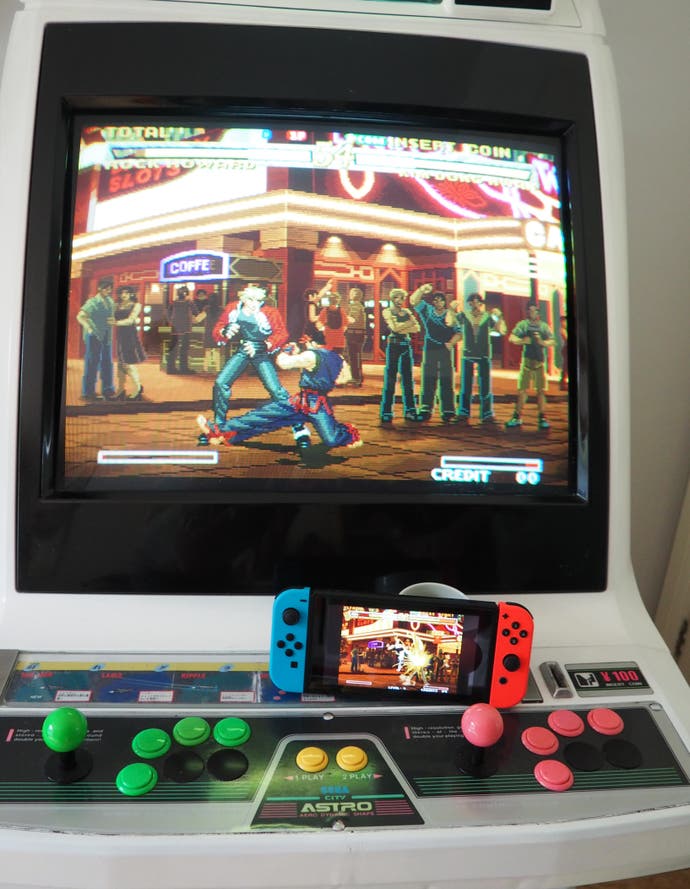If you're after a fighting game for your Switch this month, there's one obvious answer
Howling wolves.
Towards the end of this month, Capcom is bringing a reheated version of Street Fighter 2 to the Switch, and given its slightly swollen price tag you've probably got your own opinions about it already. For the same price, you could pick up four arcade perfect ports of SNK's finest fighting games and still have cash left to treat yourself down the local. Get yourself and a friend a pint with the change, share out the Joy-Cons and enjoy some of the finest the Neo Geo ever played host to.
Garou Mark of the Wolves, which just released this week, is a real highlight - a muscular, hyper-stylish brawler that came just before SNK's star began to fade, there's a strong case to be put forward for it being one of the Osaka company's best. It's the pinnacle of a certain brand of game, its 2D art admirably defiant at a time when the rest of the industry was in thrall to 3D.
And what art it is! There's a swagger to Garou's animation - whether it's the arms aloft, hips swinging waltz of B.Jenet or the heaving shoulders of Terry Bogard before he dashes into his signature power wave - that makes you pine for what's become a lost art. 2D pixel art never really went away, of course, but I don't think it's ever reached the giddy heights seen in the imperious Mark of the Wolves. The detail and density of a stage such as this is just a case in point:

It's not a bad game, either. While nominally a Fatal Fury game, Garou strips back many of the series' staples, doing away with the multi-plane combat and killing off all but one of the main cast. Only Terry returns from prior games, and while there's easy analogues to be found in the rest of the cast it's a fairly savage culling that makes Garou a standout in the series.

Such brutal reductions - there are only 12 characters here, a slimmer pick than you'd find elsewhere in many of its SNK contemporaries - are met by systems that are similarly pared back yet brilliantly effective. Garou employs the T.O.P system, whereby at the start of the fight you choose which third of your health bar grants you enhanced power when you're in it. It's a neat layer of very readable strategy that gives Garou's fights their own complexion, and it's complemented by the 'Just Defended' system whereby if you block at just the right time you're granted a little sliver of your health back.
There's an easy comparison to be made there with Street Fighter 3's parry system, just as there are many parallels to be drawn between Garou and Capcom's famously technical fighter. Street Fighter 3 came out a couple of years before Garou, and again was a 2D fighter that stood in proud defiance of the wave of 3D fighters in the late 90s. They're both pinnacles of the form, representing two companies at the height of their powers before the genre would take a very different direction at the turn of the century - and before financial troubles effectively ended the old SNK in 2001.
Garou Mark of the Wolves is an exceptional game, then, and is a welcome addition to the Switch's growing library of SNK classics. All that for a mere fraction of what's being asked for Street Fighter 2 when it comes out at the end of May. You might not be able to throw a fireball using the Joy-Cons in this revival, but I think I can live with that.

